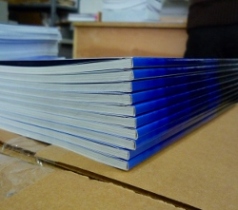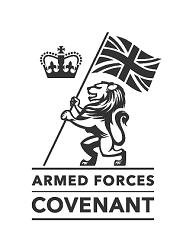|
|
|
Globalisation, coupled with the accessibility of the Internet in the modern world, can result in things meaning very
different things to different people. Common terms can be misused too; we have seen some very interesting interpretations
of meanings in our various lifetimes! We have decided to put a lexicon on the website so we can keep the pages tight to the
usually defined and abbreviated form. Apologies if that makes them a little awkward to read. Rather than a straight glossary,
herein is a lexicon to aid better the background as often a little more context is needed in this highly specialist field
and easily stated, yet difficult to actually do set of technologies and problems. This is not going to be
exhaustive, but will list many of the acronyms and areas where an explanation is best served. We will assume most of the common
Telecommunications and Military Signals terms are standard, for the avoidance of doubt we will always use the UK meaning.
If we choose to alter that to a NATO or other jurisdiction then it will be listed below. Feel free to Contact Us to ask us to update this page with something we haven't yet put on here. The common Electronic Warfare
acronyms are excluded. The following links are the various pages in alphabetic order for our site's
use of various abbreviations and our intended meaning, {use the links to relevant pages}: I2O - Defence Advanced Research Projects Agency of the US. The organisation
has the specialist programmes of AEO {Adaptive Execution Office}, DSO {Defence Sciences Office}, I2O {Information Innovation
Office}, MTO {Microsystems Technology Office}, STO {Strategic Technology Office}, TTO {Tactical Technology Office} and
BTO {Biological Technologies Office}. IBMS - Institute of Biomedical Science. ICE
- The Institution of Civil Engineers. IEC - International Electromechanical Commission. The
standards and conformity assessment body for all electrical, electronic and related technologies which was formed in 1906
in London, England. IEEE - Institute of Electrical and Electronics Engineers. Formed just
over fifty years ago this US professional organisation was formed by the merger of the American Institute of Electrical Engineers
and the Institute of Radio Engineers. It is responsible for the professional development of electrical and electronic
engineering, telecommunications, computer engineering and allied disciplines. IET -
Institution of Engineering and Technology. Formed in 1871 was the Institution of Electrical Engineers [IEE] and Formed in
1884 was the Institution of Incorporated Engineers [IIE]. Both these professional organisations merged in 2006 to form the
IET. This professional organisation also runs the internationally respected bibliographic information service called INSPEC,
which is a major index of technical and scientific literature. IEXPE - Institute of Explosives
Engineers. IHS - Is the industry's most comprehensive source of hardcopy and PDF technical
industry standards and government and military standards. IM - Instant Messaging. IMA - Institute of Mathematics and its Applications. Formed just over fifty years ago; it is an academic
and professional society for the advancement of the professionals and their techniques. IMarEST
-The Institute of Marine Engineering, Science and Technology. Formed in 1889 this is a very large professional organisation
dedicated to this multi-disciplinary domain. IMCA - International Marine Contractors Association.
A professional body with a wealth of guidelines for those working in the marine environment. IMECHE
-Institute of Mechanical Engineers. Formed in 1847 by none other than George Stephenson and to this day is a professional
organisation dedicated to the advancement of mechanical engineering excellence. IMO ~ SOLAS
- International Maritime Organisation ~ Safety of Life at Sea. This is a convention and doctrine of ensuring professional
steps are taken to ensure human survivability from the elements in a maritime setting. INMOS
- INMOS was a company that researched and developed the high-performance microprocessor called the transputer. This was heavily
funded by the UK government but was debatably ahead of its time and indeed the semiconductor manufacturing at the time. Founded
in 1978 and finally wound up in December 1994 - being acquired by STMicroelectronics in April 1989 {then called
SGS - Thomson}. By December 1994 the Transputer model T9000 had all but been abandoned and the company was then fully
assimilated into STMicroelectronics. Aspects though of the transputer designs and methods live on such as the ST20 which has
been incorporated into SoC and other chipsets that you will commonly see in set-top-boxes. IOA
- Institute of Acoustics. This was founded in 1974 and is a professional engineering body for those working in Acoustics,
Noise and Vibration. IOL - Institute of Linguistics. See CIOL for further information. IOP - Institute of Physics. IP - Intellectual Property. A company
may research and develop capabilities that themselves may well be unique and precious. They can take many forms. As a company
we are no different and we have a considerable number of capabilities, designs and research threads which have produced lots
of software, hardware designs, sub-assemblies and micro-devices, along with algorithms and techniques that are our IP and
are regularly evaluated for pull-through into products and capabilities for our customers. IP
- Internet Protocol. Often misused to define a physical address, even a port or a communication route - strictly
speaking each of those are all wrong. This is the principal communication protocol of the data networks called the Internet
{the public one} and the Intranet {the internal to an organisation or company private one}. The principal version is number
four which is changing to number six. Which is shortened to IPv4 or IPv6 respectively. This is essentially a datagram encapsulation
Protocol. The version four uses a [logical] addressing schema made up of four Bytes [nearly always written xxx.xxx.xxx.xxx
where xxx is decimal numbers 0 to 255] and version six uses an address that is two more Bytes in length. This addressing information
is encapsulated in a header followed by the datagram. This is typically encapsulated further in other protocols
to effect a more flexible and resilient communication link. User Datagram Protocol [UDP], Transmission Control
Protocol [TCP] and Internet Control Message Protocol [ICMP] are such encapsulations and key elements for such reliable and
flexible communications to occur. This is a fairly high-level statement and doesn't do justice to the complexity of such.
The ISO communications stack better explains this as some of these protocols are actually a different layer [sic: encapsulation
on the lower or more basic]. LAYER 7 APPLICATION LAYER 6
PRESENTATION LAYER 5 SESSION LAYER 4 TRANSPORT LAYER 3
NETWORK LAYER 2 DATA LAYER 1 PHYSICAL IPC
- The Industry Association for Connecting Electronics Industries. This was formally called the Institute for Printed Circuits
hence the acronym and it was founded in 1957. Also formerly known as The Institute for Interconnecting and Packaging Electronics
Circuits. Finally adopting its simpler name and tagline in 1999. ANSI recognise its standards work and internationally IPC
is known for the quality of those interconnection standards for electronics. ISO/TC
- International Standards Organisation / Technical Committee. Founded in 1947, this is an international body composed of representatives
from 164 countries and creates standards and technical approaches to many activities in commerce and industry. ITAR
- International Traffic in Arms Regulations. ITP - The Institute of Telecommunications Professionals.
Founded in 1906, this was formerly the institute of Post Office Electrical Engineers IPOEE then became the Institute of British
Telecommunications Engineers [IBTE] alongside the privatisation that became British Telecommunications plc. With further competition
and markets opening up, the professional organisation diversified and has members now across 200 organisations in the UK and
worldwide. ITU - International Telecommunications Union. This is a specialist Swiss-based
organisation as an agency of the UN, that coordinates the shared global use of the radio spectrum. This is not limited to
just local atmosphere - they are responsible for the assignment and mutual cooperation of satellite orbits and work to enhance
every aspect of telecommunication systems globally. It achieves this through a very good set of worldwide technical standards.
It has been doing this since its founding days as the international Telegraph Union in 1865 [UN agency status was 1947], and
a decade later the telephone was invented in 1876! JEITA - Japan Electronics and Information
Technology Industries Association. JTAG - Joint Test Action Group. The association has produced
standards for verifying the designs and testing of PCBs after manufacture {enshrined in IEEE 1149.1-1990}. Not only is
this a collection of key test access points deliberately placed on the PCB at key points in the circuit, but it is also about
a stateful pin or pins configuration of key components deliberately implemented at the design stage so that the circuit can
be automatically tested. |
AREA17: HOME to UK's Own Specialist Military R&D Labs & Leading Edge IP...


